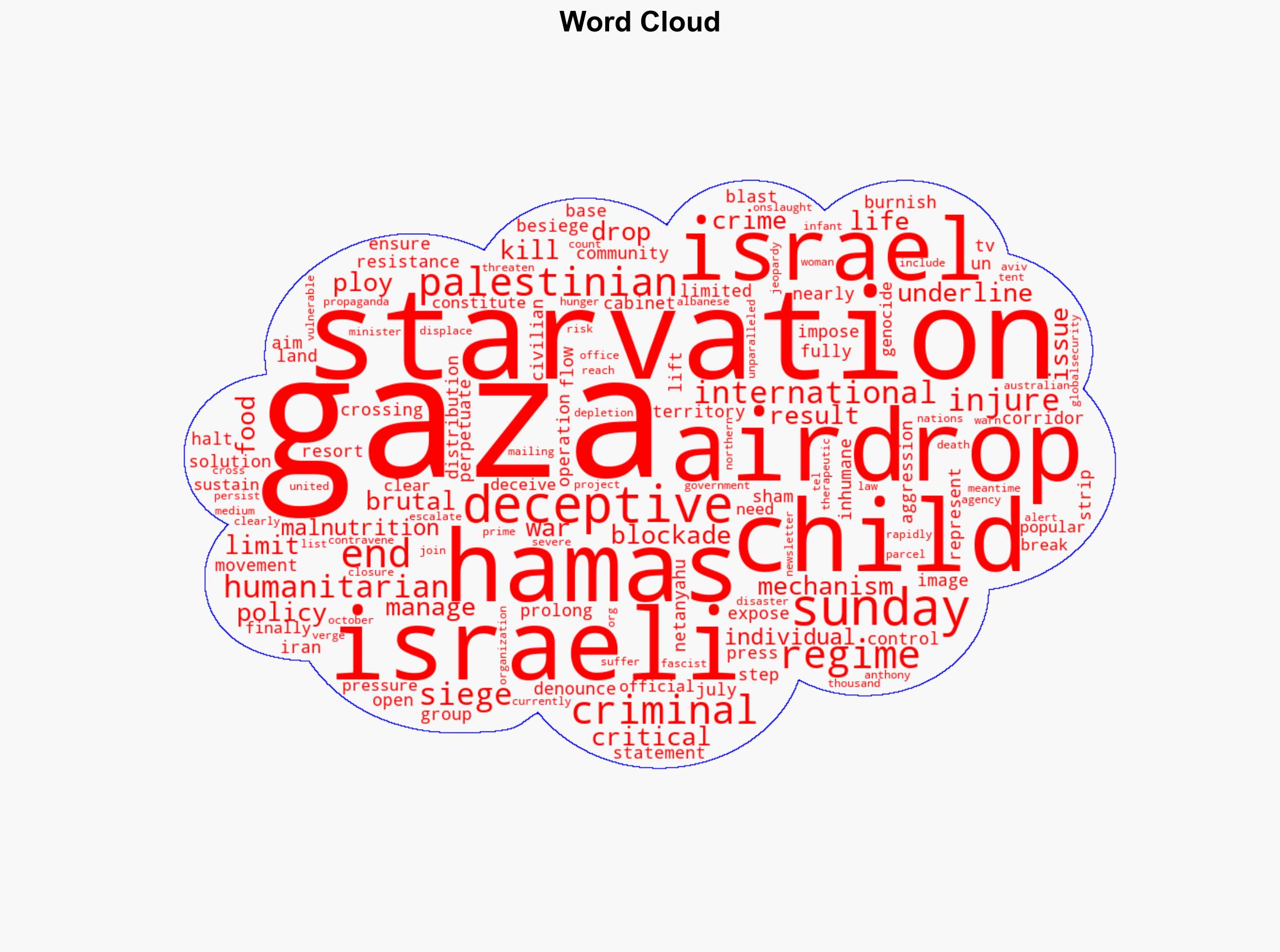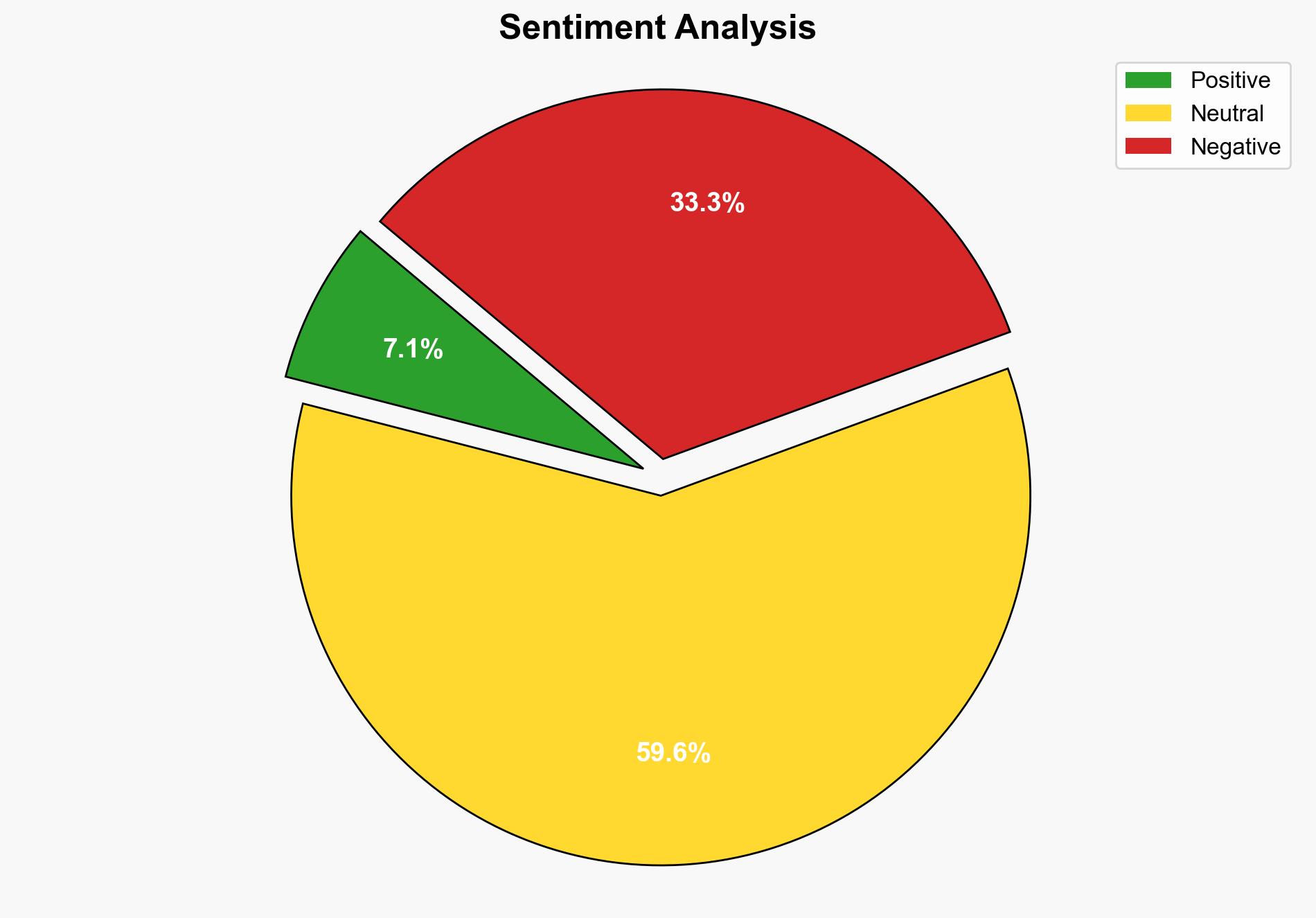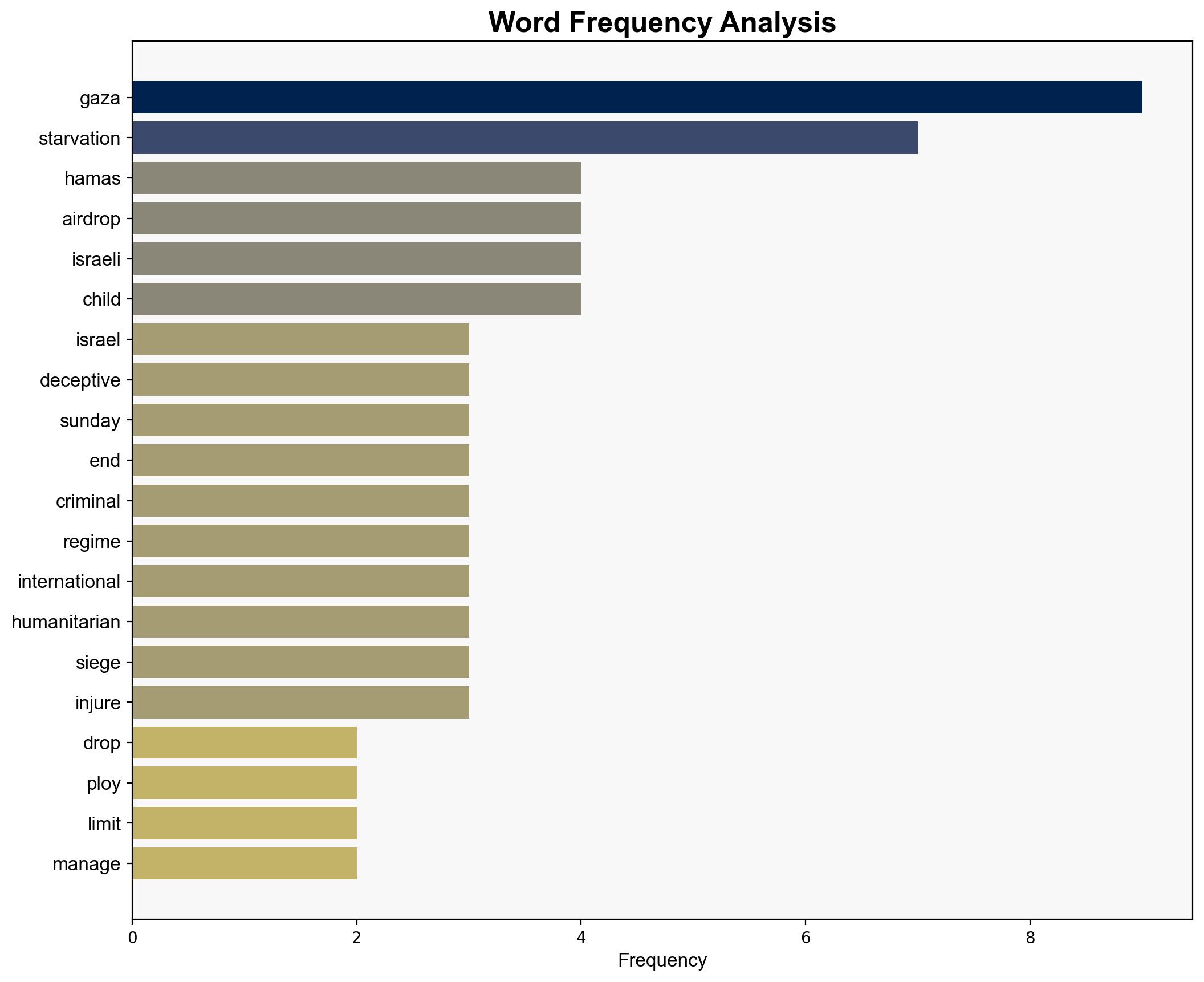Hamas blasts Israel’s limited aid drops as deceptive ploy prolonging Gaza starvation – Globalsecurity.org
Published on: 2025-07-28
Intelligence Report: Hamas blasts Israel’s limited aid drops as deceptive ploy prolonging Gaza starvation – Globalsecurity.org
1. BLUF (Bottom Line Up Front)
The most supported hypothesis is that Israel’s limited aid drops are primarily a strategic maneuver to manage international perception rather than a genuine humanitarian effort. Confidence level: Moderate. Recommended action: Increase diplomatic engagement to pressure for a comprehensive humanitarian solution and monitor for potential escalation in regional tensions.
2. Competing Hypotheses
1. **Hypothesis A**: Israel’s limited aid drops are a strategic ploy to manage international perception and deflect criticism while maintaining control over Gaza.
– **Supporting Evidence**: Statements from Hamas and international criticism suggest the aid drops are insufficient and serve more as a public relations effort.
– **SAT Applied**: Analysis of Competing Hypotheses (ACH) 2.0 indicates this hypothesis aligns with Israel’s historical strategic patterns in managing international scrutiny.
2. **Hypothesis B**: Israel’s aid drops are a genuine attempt to alleviate humanitarian suffering in Gaza, constrained by logistical and security challenges.
– **Supporting Evidence**: The existence of aid drops and statements by international figures acknowledging the blockade’s legal issues could imply a genuine, albeit limited, effort.
– **SAT Applied**: Bayesian Scenario Modeling suggests a lower probability due to the consistent narrative of insufficient aid and ongoing blockade.
3. Key Assumptions and Red Flags
– **Assumptions**:
– Hypothesis A assumes Israel prioritizes international image over humanitarian outcomes.
– Hypothesis B assumes logistical and security constraints are the primary limiting factors for aid.
– **Red Flags**:
– Lack of detailed information on the scale and frequency of aid drops.
– Potential cognitive bias in interpreting actions as purely strategic without considering operational constraints.
– Deception indicators include the use of aid drops as a narrative tool without substantive impact on the humanitarian crisis.
4. Implications and Strategic Risks
– **Patterns**: Continued limited aid could exacerbate humanitarian conditions, leading to increased international pressure and potential shifts in regional alliances.
– **Cascading Threats**: Escalation of tensions could lead to broader regional instability, impacting economic and security dynamics.
– **Potential Escalation**: Failure to address the humanitarian crisis may lead to increased militant activity and further international condemnation.
5. Recommendations and Outlook
- Engage in diplomatic efforts to advocate for a comprehensive humanitarian corridor that ensures sustained aid flow.
- Monitor regional responses to aid drops and prepare for potential escalation scenarios.
- Scenario-based projections:
– **Best Case**: Successful negotiation of a comprehensive aid agreement reduces tensions.
– **Worst Case**: Escalation of conflict due to perceived inadequacy of aid efforts.
– **Most Likely**: Continued limited aid with incremental international pressure for more substantial solutions.
6. Key Individuals and Entities
– Benjamin Netanyahu
– Anthony Albanese
– Hamas
– United Nations agencies
7. Thematic Tags
national security threats, humanitarian crisis, regional conflict, international diplomacy




